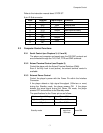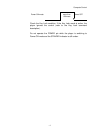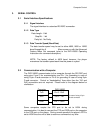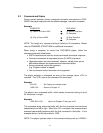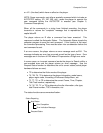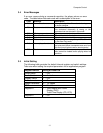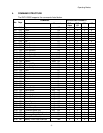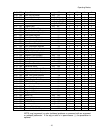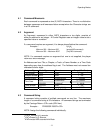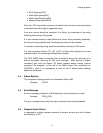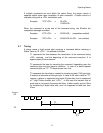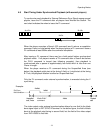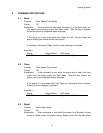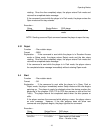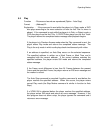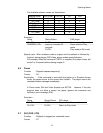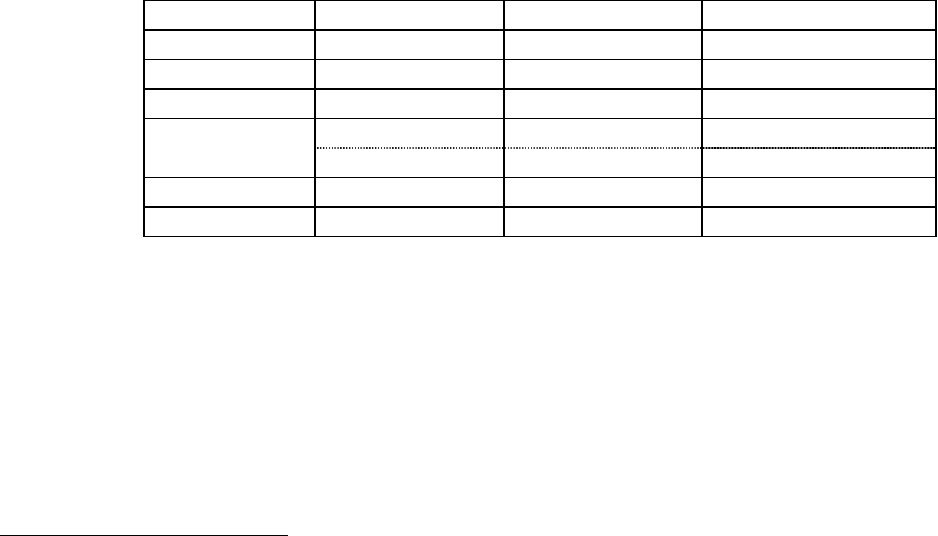
Operating Modes
4.1 Command Mnemonic
Each command is expressed as two (2) ASCII characters. There is no distinction
between uppercase and lowercase letters except when the Character strings are
in a PR command.
4.2 Argument
An Argument, expressed in either ASCII characters or ten digits, consists of
either an address or an integer. A Control Register uses an integer value to set a
specified value or condition.
If a command requires an argument, it is always placed before the command.
Example :
N
1
N
2
N
3
Minimum 000 ~ Maximum 300 (except MS command)
Minimum 000 ~ Maximum 2047 (Only MS command)
NOTE: If a command requires an argument but one is not supplied, the player
returns an error message.
An Address can be a Title, a Chapter, a Track, a Frame Number, or a Time Code
depending upon how the address flag is set. The Address must not exceed ten
characters and/or digits.
Address Type Media Type Format Range (Min-Max)
Title Number DVD N
1
N
2
1 ~ 99
Chapter Number DVD N
1
N
2
1 ~ 99
Frame Number DVD N
1
N
2
N
3
N
4
N
5
N
6
1 ~ 999999
DVD N
1
N
2
N
3
N
4
N
5
a
0 ~ 599:59
Time Code
CD/VCD N
1
N
2
N
3
N
4
b
0 ~ 99:59
Track Number CD/VCD N
1
N
2
1 ~ 99
Block Number CD N
1
N
2
N
3
N
4
N
5
N
6
c
0 ~ 995974
4.3 Command String
A command string consists of multiple commands on one line. The maximum
length of a command string is 32 characters. All command strings are terminated
by the Carriage Return <CR> code (0DH hex).
Example : FR2000SE 2300PL<CR>
NOTE: Assign the following commands individually.
a
N N N minutes N N seconds.
1 2 3 4 5
b
N N minutes N N seconds.
1 2 3 4
c
N
1
N
2
minutes N
3
N
4
seconds N
5
N
6
Block.
- 11



